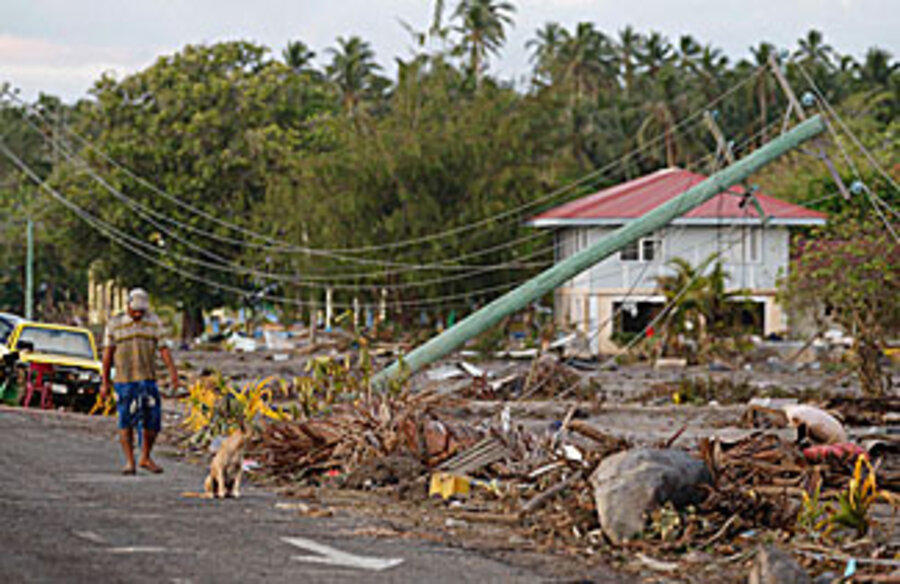Samoa tsunami lesson: Early warning system too slow
Loading...
| Sydney
International aid has begun arriving on the Samoan islands, after a tsunami Tuesday killed at least 150 people and destroyed dozens of coastal villages.
Even as relief teams confront the aftermath of the tsunami – which threw successive walls of water up to 650 feet inland and was followed by another earthquake Wednesday – the disaster is drawing attention to how much warning residents could have gotten ahead of time.
This week's events in the South Pacific demonstrate that early-warning systems are not fail-safe and education is as important as technology, seismologists and disaster management experts say.
"People assume that if they have an early-warning system, their problems are solved," says James Goff, director of the Australian Tsunami Research Centre, based at the University of New South Wales in Sydney. "But it's only one of a suite of ways of being aware what's going on. What's really needed is education about the natural indicators. If you live by the coast and there's a very large earthquake, or if you see the water receding very quickly and going much lower than low tide, you need to move uphill."
The Pacific Tsunami Warning Center in Hawaii issued its first alert 18 minutes after Tuesday's quake. By that time the first tidal wave had crashed into villages and resorts in Samoa and American Samoa. Those who survived had already fled to higher land, rattled by powerful earth tremors lasting several minutes.
It takes scientists at least 15 minutes to analyze essential data about an earthquake, including its magnitude, depth, and precise location, according to Professor Goff. So, if the quake strikes close to shore, as it did on this occasion, communities are unlikely to receive an alert in time.
When erring on the side of caution is wrong
Like many countries, Samoa installed an alert system following the devastating Indian Ocean tsunami in 2004. But for experts evaluating earthquake data, erring on the side of caution by ringing the alarm before the danger is confirmed is not an option. "There would be a lot of false alarms, then when a real tsunami happened, people would ignore the warning and get killed," says Goff.
Relief efforts on Thursday focused on recovering bodies from the rubble and the sea and providing shelter for the thousands of homeless. The death toll is expected to rise.
Australia and New Zealand – experienced in helping their neighbors following a string of natural disasters in the Pacific, including a smaller tsunami in the Solomon Islands in 2007 – are playing a leading role. Both countries have sent military planes carrying medical and emergency supplies, while the United States has dispatched two disaster recovery teams to American Samoa.
From white beaches to wreckage
Both Samoa, independent since 1961, and American Samoa, a US territory, lie within the so-called Pacific Ring of Fire, a region of intense seismic activity. Samoa, a former German protectorate, has a population of 220,000 Polynesians, while American Samoa is home to 65,000 people, mainly Pacific islanders. Both are relatively poor, with Samoa dependent on aid and foreign remittances. In American Samoa, tuna fishing and processing are the main industries.
The two countries also have modest tourism industries, but their white beaches were desolate today, strewn with wreckage, cars, and broken furniture, according to witnesses. In Pago Pago, the capital of American Samoa, looters were reported to be roaming the streets, stealing food and cigarettes from damaged shops.





